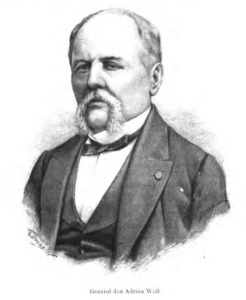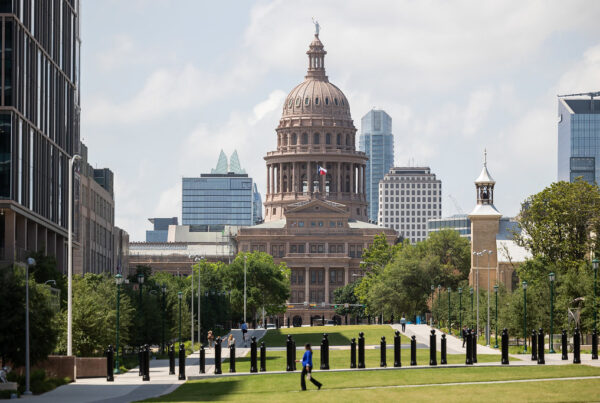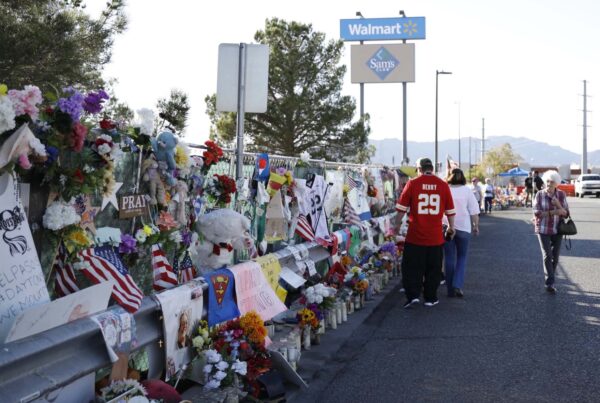Most Texans believe that the Battle of San Jacinto settled everything. Once Santa Anna was decisively – and for him, humiliatingly – defeated, most Texans believed that we were rid of the ruthless dictator forever. Santa Anna, President of Mexico, signed a treaty guaranteeing Texas independence. So he would never again set foot on Texas soil nor darken our door.
Right?
Well, that’s not what happened. It comes as a great surprise to many Texans today, as it did to our ancestors as well, that just six years after Santa Anna’s pyrrhic victory at the Alamo, he sent yet another two armies in 1842 to besiege San Antonio. The first did little harm. The second army sacked the city and occupied the Alamo once more.
General Adrián Woll shocked San Antonio at dawn on Sept. 11, 1842, which was a symbolically important date in Mexico – the day they declared independence from Spain.

Mercenary general for Mexico Adrián Woll. Public domain image
The Mexican force of about 1,500 troops, awakened all the town at once with the heart-stopping boom of a big cannon blast. This was followed by military trumpeters playing reveille. The soldiers marched and the cavalry rode through the streets. They quickly pacified minor resistance on their way to the central plaza.
This was the 1800’s version of shock and awe.
Near the plaza, Texas patriots quickly gathered and put up fierce resistance from houses nearby – shooting through rifle loopholes in the walls – but it was fruitless. They were surrounded by a Mexican force of many hundreds. They waved the white flag to sue for terms.
How did such a large army make it all the way to San Antonio without anybody noticing and sounding the alarm? General Woll, who was actually a French mercenary, was quite wily.
He brought his army across the Rio Grande about 20 miles south of Eagle Pass and then swung north of the most traveled roads, bushwacking his way through mesquite brush and motts of trees. General Woll recorded in his official report that his men “opened a road in the middle of the woods, passing by the head of Uvalde canyon, and following the San Saba range of hills” and were never seen.
From Texas history, we know that there were actually rumors of an advancing force. Just two days before their arrival, the judge sent the young Texas Ranger, Jack C. Hays, along with a few men of his company, out west to check out the rumor. They stuck to the main roads and saw nothing, but by the time they returned, San Antonio was surrounded.
When the Texans put up the white flag, they asked to return to their homes. Woll told them that “if they did not surrender at discretion, they would be exterminated without exception.”
The Texans discussed options briefly and surrendered without condition, hoping that Woll would be – shall we say – lenient and a man of his word. Woll wrote,” . . . so that they might recognize Mexican generosity, I guaranteed them their lives, and the surrender of weapons followed.”
Woll now had 62 prisoners – and high value prisoners, too. District Court was in session so he had many of San Antonio’s finest in custody: seven lawyers, a District Court judge, two physicians, a surgeon and many prominent business leaders.
He told them that they would be returning with him to the border where they would be released. This was a lie. They were taken all the way to the infamous Perote Prison east of Mexico City where many were held for two years, subjected to hard labor during the day and chained in dungeons at night. A few of the men died en route and some died in captivity.
Woll did not occupy San Antonio long. His goal was to be a disrupting force, preventing Texans from feeling secure and also to inhibit migration from the U.S. given such an unpredictable climate.
Santa Anna also wanted to scare off countries like Britain and the U.S., who had interests in annexing Texas. To many observers around the world, Santa Anna was the equivalent of the crazy ex-boyfriend keeping new suitors at bay by his unpredictability.
Woll’s other objective was to march east of San Antonio to determine if there were credible military build-ups for a Texas invasion of Mexico. There was not, but it’s ironic that his scouting trip resulted in creating a passionate cry across Texas for just that – an army to invade and crush Mexico once and for all.
When Woll prepared to take his army to the east, young Texas Ranger Jack Hays and others sounded the alarm throughout Texas that San Antonio had fallen. Volunteers grabbed their guns and saddled their horses. They rode like the wind and gathered with Colonel Matthew Caldwell in Seguin.
They pushed on to Salado Creek and made camp. From there, Hays led his Rangers to tempt Woll to pursue them. Woll took the bait and the Texans, from the cover of the woods and employing their sharp shooters, killed and wounded over 60 Mexican soldiers while the Texans lost only one.
Captain Nicholas Dawson and his 54 men were attacking Woll’s rear guard. Woll couldn’t risk being surrounded. He sent 500 men to neutralize the threat. 36 of Dawson’s men, including Dawson, were killed. 16 were taken prisoner, two escaped.
Woll, in his journal, focused on the Dawson massacre, declared victory and headed back to Mexico.
Santa Anna had once again underestimated Texan resolve. He wanted to unsettle the new republic with fear and chaos and keep them isolated in the world. Instead, he drove the Texans toward a collective desire to join the United States of America, which they did three years later, with 94 percent of Texans voting to join the union.














